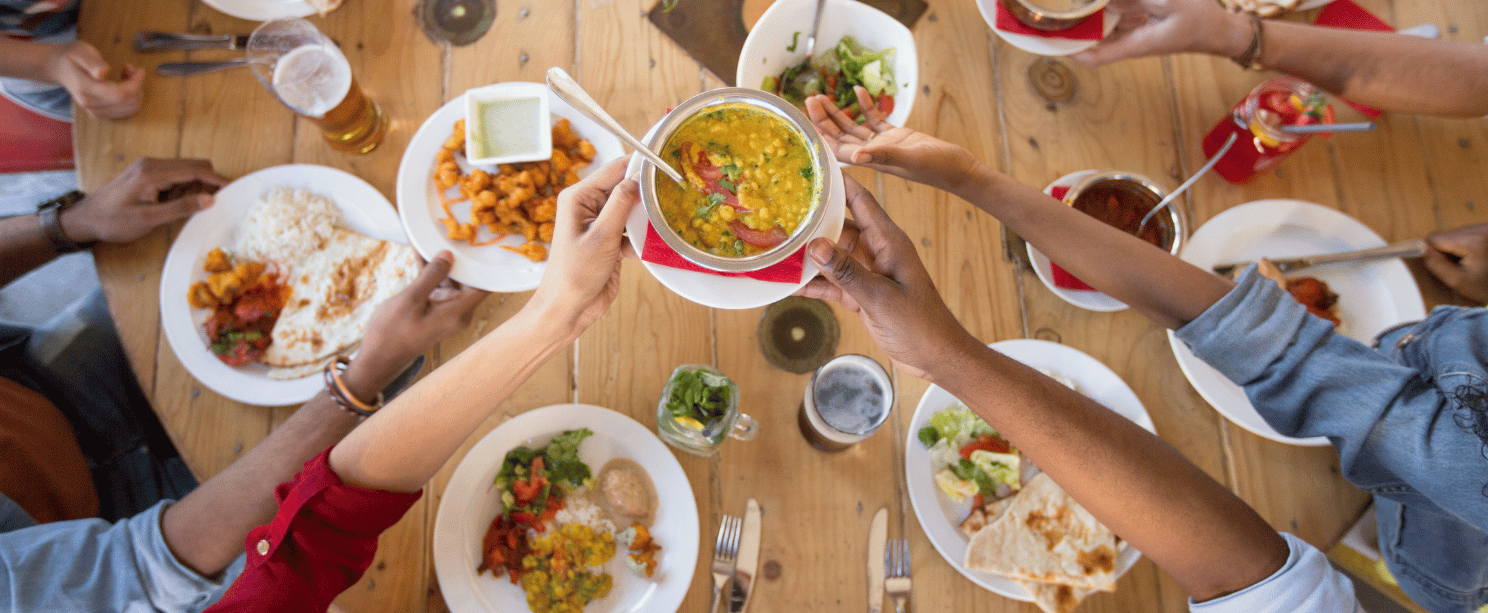
Diabetic Meal Preparation: The Best and Worst Foods for Your Diet
What you eat is important, especially when you have diabetes. The foods you consume have a direct impact on your body’s functioning, your blood glucose levels, and your overall energy. When you follow a healthy meal plan, exercise regularly, and take your medicine as scheduled, you’ll successfully manage your diabetes without a problem. The issue is that many people live busy lives, which makes it more difficult to find the time to cook healthy meals. The last thing on your mind when you come home is finding a healthy recipe, preparing it, cooking it, and then cleaning up. That’s where meal planning comes in. In this article, we’ll discuss the benefits of planning along with some clean eating recipes of diabetic meal planning.
Benefits of Meal Planning
Meal planning is a great way to help manage your diabetes. Since what you eat, how much you eat, and when you eat are all important factors in managing your blood glucose levels1, meal planning will allow you to create optimal conditions for your body to function. The key is to plan far enough in advance so that you anticipate what you’re eating and are well prepared for it.
While some people prefer to cook their meals immediately before enjoying them, others choose to make larger meals to be enjoyed for a few days at a time. Either way works, it just depends on your personal preference.
- Streamlines Prep
Regardless of if you cook everything at once or portion it out, you can take care of all of the prep work at the same time. Make a grocery list and get your shopping done before the week starts. Then chop up any vegetables, marinate any meat, and portion out snacks to make things easy and convenient.
- Helps You Make Healthier Choices
If you fail to plan, you should plan to fail. Choosing food in the moment leads to unhealthy decisions, over eating, and lots of processed foods. Meal planning will help you make healthier choices so you can live your best life. As a general rule, if it’s unhealthy, avoid buying it. Even if you tell yourself you’re only going to have a small treat here and there, keeping it in the house is dangerous.
When you make healthier choices you will help maintain a healthy weight and hit your target blood glucose levels. As a long-term habit, healthy choices lead to fewer diabetes problems and complications down the road.
- Allows for Optimal Control
Some people with diabetes find that eating at the same time every day allows for better management. Others are required to do so because of their diabetes medicine or type of insulin.1 Regardless, meal planning gives you control when you live a busy life. Even if you don’t prep your food in advanced, when you meal plan you’ll at least know what’s on the menu and will have food ready and available.
Best Foods for People with Diabetes
When making your meal plan, try to incorporate the foods that follow. As long as you’re eating a variety of healthy foods, you’ll reap the benefits. For more amazing clean eating recipes for diabetic meal planning, check out Diabetes Strong.
- Green Leafy Vegetables
Green leafy vegetables are healthy whether you have diabetes or not, as they’re full of essential vitamins and minerals. They have a very small impact on your blood sugar and contain antioxidants and starch-digesting enzymes.2
Here are some great recipes that include green leafy vegetables.
- High-Fat Fish
Fatty fish is one of the healthiest sources of protein around. They contain omega-3 fatty acids DHA and EPA, which are beneficial for heart health, protect your blood vessel cells, reduce inflammation, and improve your arteries.3
Check out this Mediterranean chopped salad with salmon for a great recipe. Some other options for preparing fatty fish include baking, roasting, or grilling your choice of salmon, mackerel, albacore tuna, or herring.2 Pair your fish with a mix of roasted vegetables, a side salad, or some healthy whole grains.
- Whole Grains
Just because you’re eating healthy doesn’t mean you have to give up grains. Opt for whole grains to reap the benefits from this low glycemic index food.2 The lower the glycemic index (GI) of something is, the slower it’s digested, and the less impact it has on your blood sugar.2
- Sweet Potatoes
If you love potatoes, make the switch to sweet potatoes. Sweet potatoes have a significantly lower GI that will keep you full without causing spikes in your blood sugar.2 Some great sweet potato recipes can be found here.
- Beans
Beans have a low GI, help regulate blood sugar and blood pressure, and keep you feeling full without loading up on carbohydrates.2 Beans are great because they’re so versatile and can be used in almost any recipe. Add them to your favorite salads, soups, or sides.
- Nuts
Nuts provide you with a lot of benefits from fatty acids, which help protect against heart disease and stroke.2 Opt for high-fat nuts like walnuts to get the most benefit.
- Citrus Fruits
It’s been shown that citrus fruits produce an anti-diabetic effect.2 They provide you with high levels of vitamins and minerals and are a great way to spice up boring water. Add slices of lemon, grapefruit, or oranges to your water or use them in salad dressings.
- Berries
Berries are another great fruit option as they have lower sugar content. Plus, almost all berries are packed with antioxidants and fiber.2 Berries are great when eaten alone, added to a smoothie or salad, or mixed into oatmeal.
- Greek Yogurt
Greek yogurt is packed with probiotics, healthy bacteria that help improve blood sugar control.3 If you’re not a fan of Greek yogurt, try adding it to some recipes as a substitute for sour cream. Other probiotic yogurts can help too, but they often aren’t as healthy. Make sure you avoid things with excess sugar and carbohydrates, as those will have the opposite affect on your body.
- Chia Seeds
Chia seeds are packed with slow-digesting fiber. In fact, the fiber has been shown to actually lower blood sugar levels by reducing the rate that food travels through your gut.3 Sprinkle them in smoothies, salads, or try your hand at a chia seed pudding.
- Eggs
Eggs are great because they’re easy to prepare, provide elongated satiety, decrease inflammation, and help to manage both good and bad cholesterol levels.3 Keep the yolk when using eggs—that’s where all the nutrients are! Check out this great egg and spinach breakfast to start your day off right.
- Broccoli
Broccoli has been seen to help lower insulin levels while providing your body with lots of essential nutrients. Whether you eat it raw, steamed, or roasted is up to you.
- Spices and More
In addition to the above foods, try to incorporate more garlic, turmeric, cinnamon, extra virgin olive oil, and apple cider vinegar into your diet. All of these spices, oils, and vinegars help reduce inflammation and contribute to healthy blood sugar levels.
Foods to Limit or Avoid if You Have Diabetes
While your goal is to stick to healthy foods for most of your meal planning, a little indulgence every now and then isn’t the worst thing to happen. Just remember, you really do need to limit these foods to keep your blood glucose levels stable and you shouldn’t indulge if you haven’t been making healthy choices consistently. With that being said, the following foods should be eaten in very small moderation.
- Foods with High Glycemic Index – these foods increase your blood sugar and should be limited.
- Heavy Carbs
- Unhealthy Fats
- Refined Sugar
- Excess Salt
- Alcohol
Conclusion
At times, diabetes can be frustrating. Having a limitation on what you can eat seems unfair, but it doesn’t have to be boring or bland. You can still make your favorite recipes healthy enough to enjoy regularly. Just make sure you’re regularly checking your blood sugar levels and following your doctor’s treatment plan. If you need any blood glucose meters or continuous glucose monitoring devices, Byram Healthcare has you covered. We’re proud to provide you with the latest technology in diabetes management, including continuous glucose monitoring. We’ll work with your insurance provider and doctor to ensure you’re supported from start to finish, maximizing your coverage while minimizing out-of-pocket expenses. For more information and added support on diabetes management, sign up for Byram Healthcare’s Caring Touch At Home™ Program. We focus on providing exceptional customer service and top-of-the-line brand name products while lowering your overhead costs. The Caring Touch At Home™ Program combines convenience, affordability, and choice to deliver extensive service and support to everyone living with diabetes.
For added support, don’t hesitate to get in touch with Byram’s Diabetes Center of Excellence—a one source, total solution for diabetes care. Our Center of Excellence combines high quality products with clinical and educational research to help you better manage your condition, support all of your needs, and live a long, healthy life. Browse our products, find resources, and learn more about our Caring Touch At Home™ Program today.
Sources:
1https://www.niddk.nih.gov/health-information/diabetes/overview/diet-eating-physical-activity
2https://www.medicalnewstoday.com/articles/324416.php#green-leafy-vegetables
3https://www.healthline.com/nutrition/16-best-foods-for-diabetics#section3




